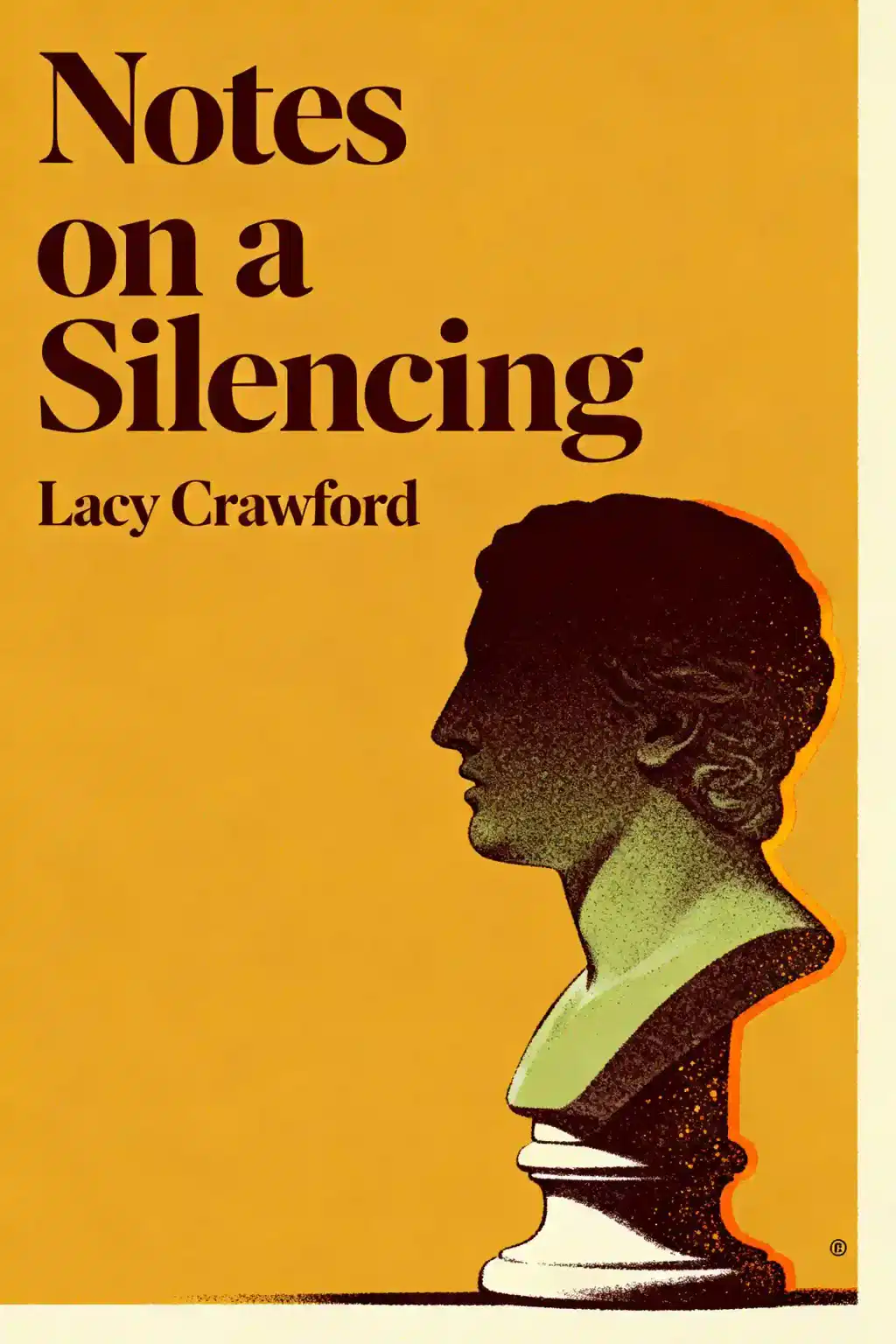
Notes on a Silencing by Lacy Crawford Summary
Lacy Crawford's memoir exposes her sexual assault at St. Paul's School and the institution's shocking cover-up. Named a Best Book by Time and NYT, this haunting narrative prompted a formal apology decades later. What other elite institutions are still silencing victims today?
About the author
Lacy Crawford, bestselling author of the memoir Notes on a Silencing, is celebrated for her incisive explorations of trauma, power, and institutional failure. A former rape crisis counselor and high school English teacher, Crawford draws from her personal and professional experiences to craft narratives that confront societal silence around abuse. Her debut satirical novel, Early Decision (2013), lampooned the college admissions industry, informed by her years as a private admissions counselor.
Crawford’s work has appeared in The New York Times, Wall Street Journal, and Vanity Fair, and she served as senior editor of Narrative magazine.
Notes on a Silencing, a New York Times Notable Book and Editors’ Choice, was named one of 2020’s best books by Time, NPR, and Library Journal. Recognized for its unflinching examination of adolescent sexual assault and institutional complicity, the memoir underscores Crawford’s authority in blending journalistic rigor with literary precision. Her writing continues to resonate in discussions about accountability and resilience.
FAQs About This Book
Notes on a Silencing is a memoir by Lacy Crawford that recounts her sexual assault at 15 by two seniors at St. Paul’s School, an elite New England boarding school, and the institution’s systemic efforts to bury the incident. It examines how privilege, gender, and power dynamics enabled a culture of silencing victims to protect the school’s reputation. Crawford interweaves personal trauma with broader critiques of systemic injustice.
This memoir is essential for readers interested in #MeToo narratives, institutional accountability, and memoirs that blend personal trauma with societal critique. It resonates with advocates for survivors of sexual violence and those examining power structures in elite institutions. Critics praise its literary depth, making it suitable for fans of investigative nonfiction.
Yes. The book was named a New York Times Notable Book and a Best Book of 2020 by Time, NPR, and others. Crawford’s unflinching prose and meticulous documentation of institutional gaslighting offer both a personal reckoning and a broader societal indictment. Its tension-filled narrative has been compared to a psychological thriller.
Lacy Crawford is an author, journalist, and advocate whose work includes the satire Early Decision (2013) and this memoir. A Princeton graduate, she worked as a rape crisis counselor and teacher before writing. Her experiences at St. Paul’s School and mentorship by Toni Morrison shaped her focus on trauma and voice.
The memoir details St. Paul’s prioritization of reputation over student safety, showcasing how faculty, doctors, and administrators colluded to discredit Crawford and protect her attackers. This microcosm reflects broader societal failures to hold powerful institutions accountable. Crawford’s case file, reopened decades later, reveals deliberate suppression of evidence.
Crawford highlights patriarchal norms that vilified her as a “slut” while her attackers graduated with honors. The book critiques double standards in sexual violence narratives and the cultural mechanisms that normalize victim-blaming. Her experience underscores how gender hierarchies in elite spaces perpetuate systemic abuse.
As a former rape crisis counselor, Crawford combines personal testimony with analytical rigor. Her literary training (honed under Toni Morrison) infuses the memoir with lyrical precision and psychological depth. The result balances raw emotion with forensic examination of institutional records.
Some readers find its graphic descriptions of assault and medical trauma intensely unsettling. Others note its narrow focus on elite institutions may limit broader applicability, though Crawford argues these spaces amplify societal power imbalances. Critically, it’s praised for its courage and craftsmanship.
Like Chanel Miller’s Know My Name, Crawford’s memoir merges personal narrative with systemic critique, but it uniquely dissects institutional complicity in silencing survivors. Its focus on elite education distinguishes it from narratives centered on workplace or familial abuse.
The book contributed to renewed scrutiny of St. Paul’s and similar schools, coinciding with independent investigations into decades of abuse cover-ups. It sparks dialogue about reforming cultures of privilege that shield perpetrators. Crawford’s testimony is cited in debates on trauma-informed institutional policies.
Crawford employs a hybrid style—part memoir, part investigative journalism—with taut, literary prose. She alternates between the voice of her teenage self and adult reflections, creating a nuanced exploration of memory and trauma. The result is both visceral and intellectually rigorous.
Crawford reconstructs her assault using medical records, legal documents, and correspondence uncovered during a 2017 criminal reinvestigation. These revelations confirm the school’s orchestrated silencing, contradicting decades of gaslighting. Her methodical approach mirrors true crime, offering irrefutable proof of institutional betrayal.
Quick Summary Mode - Read or listen to Notes on a Silencing Summary in 8 Minutes
Break down key ideas from Notes on a Silencing into bite-sized takeaways to understand how innovative teams create, collaborate, and grow.
Flash Card Mode - Top 8 Insights from Notes on a Silencing in a Nutshell
Distill Notes on a Silencing into rapid-fire memory cues that highlight Pixar’s principles of candor, teamwork, and creative resilience.

Fun Mode - Notes on a Silencing Lessons Told Through 18-Min Stories
Experience Notes on a Silencing through vivid storytelling that turns Pixar’s innovation lessons into moments you’ll remember and apply.
Personalize Mode - Read or listen to Notes on a Silencing Summary in 0 Minutes
Ask anything, pick the voice, and co-create insights that truly resonate with you.

From Columbia University alumni built in San Francisco
See More Stories?

Get the Notes on a Silencing summary as a free PDF or EPUB. Print it or read offline anytime.
























